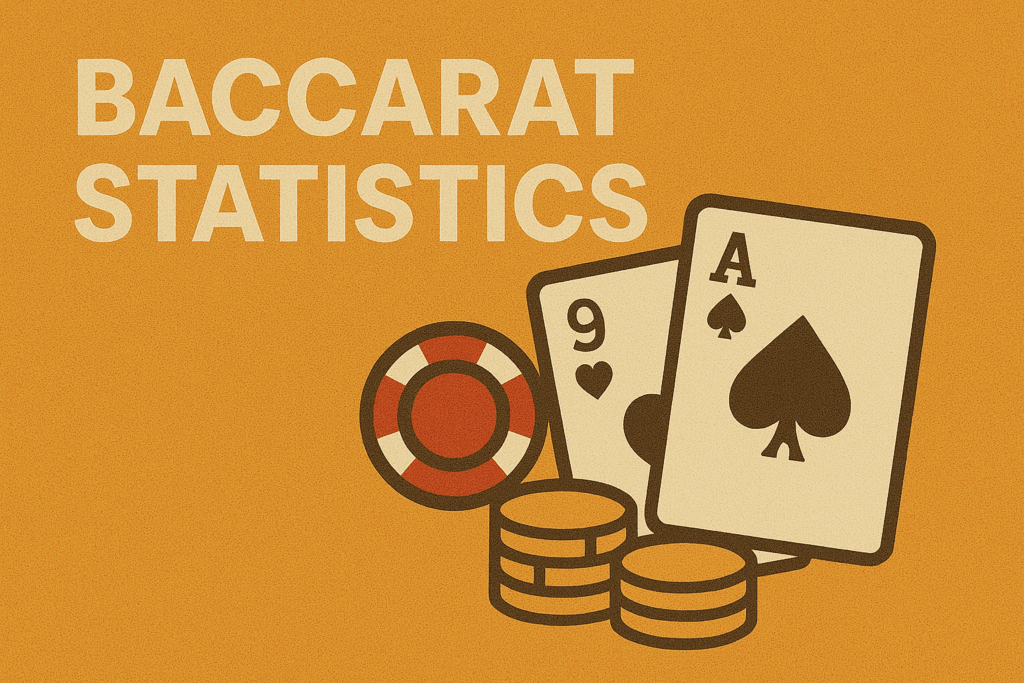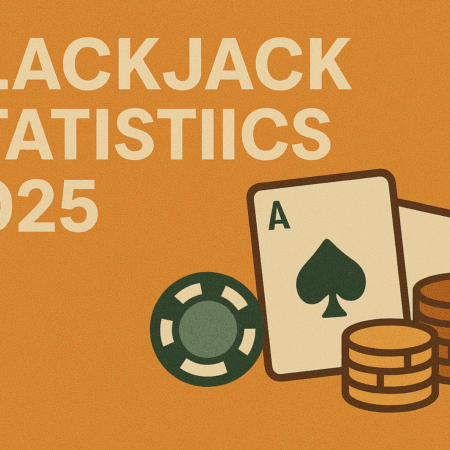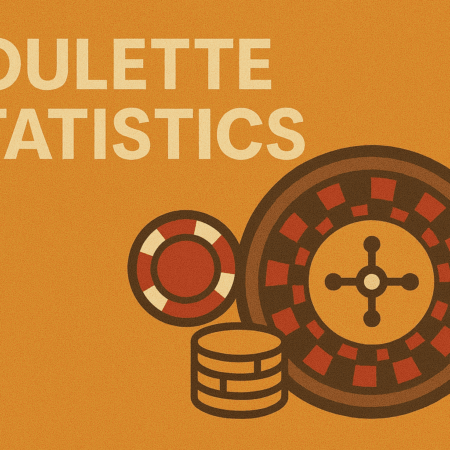
Baccarat has long held a reputation for elegance and high stakes, captivating casino floors from the grand halls of Macau to the neon-lit tables of Las Vegas and the rapidly expanding universe of online gaming. In 2025, baccarat continues to be a top choice for both casual gamblers and high rollers, with its simple rules, fast-paced gameplay, and some of the best odds available in the casino world. But beneath the surface glamour, baccarat is a game defined by mathematics—house edge, probability, and player behavior all shape the long-term outcomes.
- Sign-Up Offer
- FREE 500 GC + 3 SC
- No purchase necessary
- 100% First-Purchase Boost
- Daily Login Bonus: 10 FS
- Social Media Contests
- VIP Exclusive Rewards
This comprehensive guide brings together the latest baccarat statistics, historical casino data, and player trends from both land-based and online platforms. Whether you’re a player seeking the best bets, a gambling strategy researcher, or a data analyst tracking industry trends, this article will help you understand the real odds, the impact of player choices, and the evolving landscape of baccarat in 2025.
Baccarat Game Basics
Baccarat is a card game where players bet on one of three possible outcomes: the Banker hand, the Player hand, or a Tie. The goal is to predict which hand will have a total closest to nine, with face cards and tens counting as zero, and aces as one. Two cards are dealt to both the Player and Banker sides, and a third card may be drawn based on strict rules.
Main Bet Types:
- Banker Bet: Wager that the Banker hand will win.
- Player Bet: Wager that the Player hand will win.
- Tie Bet: Wager that both hands will tie.
Game Variants:
- Punto Banco: The most common version worldwide, especially in North America and online, where all actions are dictated by the rules and players bet on outcomes.
- Chemin de Fer: Popular in France, players take turns acting as the banker and can make decisions on drawing cards.
- Mini-Baccarat: A faster, lower-stakes version with the same rules as Punto Banco, but run by a single dealer.
- Lightning Baccarat, Speed Baccarat: Modern online variants that add multipliers or speed up gameplay for more hands per hour.
The simplicity of baccarat’s rules—combined with the limited number of betting options—makes it accessible to new players while offering strategic depth for those who pay attention to statistics.
Statistical Odds of Each Bet
Understanding the odds and house edge for each bet is crucial for making informed decisions at the baccarat table. Here’s a breakdown of the main bets:
| Bet Type | Probability | Payout | House Edge |
| Banker | ~45.86% | 0.95:1* | 1.06% |
| Player | ~44.62% | 1:1 | 1.24% |
| Tie | ~9.52% | 8:1 or 9:1** | 14.36% |
*Banker bet typically pays 1:1 minus a 5% commission, hence the effective payout of 0.95:1. **Some online casinos use 9:1 payout, which drastically lowers the edge to 4.84%.
Why Banker is Best Statistically
The Banker bet has a slightly higher probability of winning than the Player bet due to the drawing rules, which favor the Banker in certain scenarios. However, casinos offset this by taking a 5% commission on Banker wins, resulting in a house edge of about 1.06%—the lowest of any standard casino bet. The Player bet, with no commission, has a slightly higher house edge at 1.24%.
Tie Bets: High Risk, High House Edge
Tie bets offer tempting payouts (8:1 or 9:1), but the probability of a tie is only about 9.5%. The house edge on Tie bets is a hefty 14.36% (for 8:1 payout), making it one of the worst bets in the casino.
Impact of Decks and Commission
- The odds and house edge can vary slightly depending on the number of decks in play, but most modern baccarat uses 6 or 8 decks.
- Some casinos offer “No Commission Baccarat,” but adjust the payout structure to maintain a similar house edge.
Historical Casino Data on Baccarat
Macau: The World’s Baccarat Capital
Baccarat is the engine of Macau’s casino industry, consistently accounting for over 80% of total gaming revenue. In 2024, Macau’s mass market baccarat generated more than US$20 billion in gross gaming revenue, with VIP baccarat (higher stakes) making up a significant portion.
- Casino Hold Percentage: Macau casinos typically “hold” over 20% of baccarat wagers in the mass market, reflecting both the house edge and player betting behavior.
- Trends 2015–2025: Baccarat’s dominance in Macau has remained steady, even as other games and amenities have grown. The rise of premium mass-market players and the increasing popularity of live dealer and electronic baccarat tables have shaped recent growth.
Las Vegas: Baccarat’s High Roller Appeal
In Las Vegas, baccarat is favored by high rollers, particularly from Asia. Nevada Gaming Control Board reports show that baccarat tables often have the highest average win per table of any game, despite fewer tables compared to blackjack or slots.
- Table Hold Percentage: The average hold percentage for baccarat in Las Vegas is about 12–14%, higher than the theoretical house edge due to player behavior, bet sizes, and streak chasing.
- Historical Performance: From 2015 to 2025, baccarat revenue in Las Vegas has fluctuated with international tourism trends but remains a key driver of casino profits.
Online Growth and 2025 Trends
- Live Dealer Baccarat: The fastest-growing segment, offering the social experience of a real casino with the convenience of online play.
- Mobile Baccarat: More than half of online baccarat sessions in 2025 are played on mobile devices, reflecting broader digital trends.
- Speed and Lightning Variants: New formats like Speed Baccarat (rounds under 30 seconds) and Lightning Baccarat (random multipliers) are popular with younger audiences seeking faster play and bigger potential payouts.
Online vs Land-Based Baccarat Stats
Payout Rates and House Edge
- Online Baccarat RTP: Most reputable online baccarat games offer a Return to Player (RTP) of 98.94% for Banker bets and 98.76% for Player bets, closely matching land-based odds.
- Land-Based Baccarat: The house edge is nearly identical, but actual player returns can vary due to differences in bet sizes, session lengths, and streak chasing.
Hands per Hour and Volatility
- Online Baccarat: Players can complete 60–80 hands per hour in live dealer games, and over 150 hands per hour in RNG (Random Number Generator) versions.
- Land-Based Baccarat: Typically 40–70 hands per hour, depending on table size and dealer speed.
- Volatility: Baccarat has relatively low volatility compared to other table games, but the fast pace of online play can increase the risk of rapid bankroll swings.
Player Tracking and Betting Patterns
- Session Length: Online sessions tend to be shorter, but players often play more sessions overall.
- Betting Patterns: Data shows a preference for Banker bets online, with many players using streak tracking tools or “roadmaps” to inform their decisions.
RNG vs Live Dealer Dynamics
- RNG Baccarat: Uses certified algorithms to ensure fairness and randomness.
- Live Dealer Baccarat: Offers transparency and social interaction, with outcomes determined by physical cards.
Player Behavior and Betting Trends
Average Bet Size and Streak Chasing
- Average Bet Size: In 2025, the average online baccarat bet is around $25, while land-based tables often see average bets of $100 or more, especially in VIP rooms.
- Streak Chasing: Many players believe in “hot” Banker or Player streaks, increasing bets during perceived runs. This behavior is common but statistically unfounded, as each hand is independent.
Scorecards and Roadmaps
- Big Road, Bead Plate, Small Road, Cockroach Pig: These visual tools track outcomes and patterns, widely used in both Asian and Western casinos.
- Purpose: While they add excitement and structure, there’s no statistical evidence that they improve long-term win rates.
Misconceptions: The Gambler’s Fallacy
- Gambler’s Fallacy: The belief that past outcomes affect future results (e.g., after five Banker wins, Player is “due”). In reality, baccarat hands are independent, and streaks are a natural product of random chance.
AI and Analytics Among High Rollers
- Advanced Data Use: Some high-stakes players use AI tools and analytics to track trends, but these are more about maximizing comp value and managing bankrolls than beating the game’s odds.
Winning Strategies and Statistical Myths
Flat Betting vs Progressive Systems
- Flat Betting: Wagering the same amount each hand is the most statistically sound approach for minimizing variance.
- Progressive Systems: Strategies like Martingale (doubling after losses) or Fibonacci (increasing bets in a sequence) are popular but do not change the house edge. They can lead to large losses during losing streaks.
Do Strategies Improve Outcomes?
- Statistical Reality: No betting system can overcome baccarat’s house edge in the long run. Over 10,000 simulated hands, the Banker bet will consistently lose about 1.06% of total wagers, Player 1.24%, and Tie 14.36%.
- Short-Term Variance: While streaks and short-term wins are possible, the mathematics of the game ensures the house always has a slight edge.
Bet Performance Over 10,000 Rounds
Simulations and real-world casino data confirm that, over tens of thousands of hands, actual results closely match theoretical probabilities. For every $100,000 wagered:
- Banker bet returns about $98,940
- Player bet returns about $98,760
- Tie bet returns about $85,640 (at 8:1 payout)
Notable Baccarat Records and Case Studies
Famous Wins and Losses
- Phil Ivey Edge Sorting Case: In one of the most famous baccarat stories, professional gambler Phil Ivey won over $20 million using a technique called “edge sorting” at casinos in London and Atlantic City. Courts later ruled against Ivey, as the technique exploited card imperfections rather than luck or skill, highlighting the importance of game integrity.
Casino Record Earnings and Losses
- Macau’s Biggest Wins: Single-day baccarat wins exceeding $10 million have been reported, especially during major holidays or with VIP players.
- Las Vegas Swings: In 2024, a Las Vegas Strip casino reported a record monthly baccarat win of over $50 million, driven by a handful of high-stakes players and a streak of Tie outcomes.
2024/2025 Baccarat News
- AI Surveillance: Casinos in Macau and Singapore have increased the use of AI to monitor for collusion and suspicious betting patterns at baccarat tables.
- Online Innovations: Lightning Baccarat and other multiplier-based games have surged in popularity, attracting a new generation of players seeking higher volatility and bigger payouts.
Takeaway: Baccarat by Numbers
Baccarat’s enduring popularity in 2025 is rooted in its elegant simplicity, fast-paced action, and some of the best odds in the casino world. Yet, the game is governed by unchanging mathematical laws: the Banker bet remains the statistically best choice, the Tie bet is best avoided, and no betting system can overcome the house edge in the long run. Understanding the true odds, house edge, and player behavior trends is essential for making smart, responsible decisions—whether you play online, at a live dealer table, or in a land-based casino.

 Canada
Canada Deutsch
Deutsch Español
Español Português
Português


